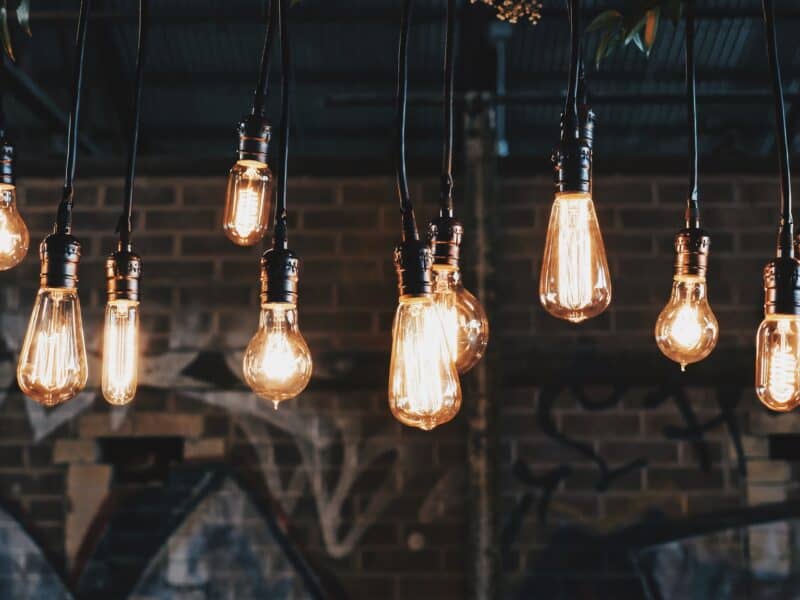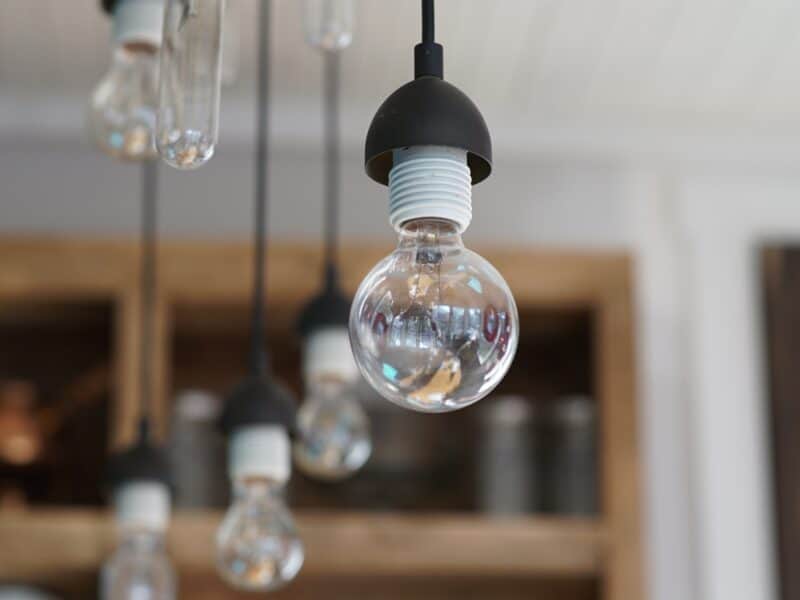
Once you have selected the perfect lighting fixture, you will need to explore your options, so that you can decide which is the best choice of light bulb for your needs.
Although light bulbs are fairly basic in function, there are several different kinds to choose from. Here is a run down on your choices.
Incandescent Bulbs
The most common sources of indoor lighting are incandescent, fluorescent and halogen bulbs. Incandescent or filament bulbs create light by using an electrical current to heat a fine coil of tungsten wire filament to + 4,000 degrees Fahrenheit, causing it to release energy in the form of visible light.
The filament in a standard 60-watt bulb measures approximately 6.5 feet in length and is held in place by a glass mount housed in a bulb filled with inert argon gas. The gas prevents the rapid evaporation of tungsten atoms at the extremely high temperature which would cause the bulb to quickly burn out.
Fluorescent Bulbs
Fluorescent bulbs use a phosphor powder coated glass tube containing argon and a small amount of mercury. When electrically charged, the mercury within the tube is changed from a liquid to a gas, releasing ultraviolet light photons which interact with phosphor atoms to produce visible white light.
The advantage of fluorescent bulbs is that, unlike incandescent bulbs, they waste very little energy in the production of heat. Fluorescent bulbs are 4 to 6 times more efficient than incandescent bulbs (a 15-watt fluorescent bulb will produce as much light as a 60-watt incandescent bulb).
Halogen Bulbs
Halogen bulbs operate under the same principal as standard incandescent bulbs, but are far more efficient. Standard incandescent bulbs radiate large amounts of infrared heat, which wastes energy and causes the tungsten in the bulb’s filament to evaporate and deposit on the interior glass. The loss of tungsten eventually causes the filament to break, burning out the bulb.
Halogen bulbs encase the tungsten filament in a smaller quartz envelope filled with gas from the halogen group. At high temperatures, the halogen gas combines with the evaporating tungsten atoms, re-depositing them onto the filament. This process has several advantages; the first being that the filament within the halogen bulb does not burn out as quickly, increasing the life of the bulb itself.
The second advantage is that the bulb can be run at much hotter temperatures, producing more light per unit of energy. Lastly, the small size of the Halogen bulb means that they can be installed in small, out of the way locations.
Natural Daylight Bulbs
If you are prone to the ‘winter blues’ then natural daylight bulbs may be the solution for you. On at night the light emitted from the bulbs appears in the room as if illuminated by natural daylight.
On during the daylight, light emitted from the bulbs is so close to natural daylight that it’s light merges into the natural daylight of the room – making the room naturally brighter, and gently stimulating the senses. Natural daylight bulbs will also help you see colours more clearly and accurately, while reducing glare, eyestrain and fatigue.


